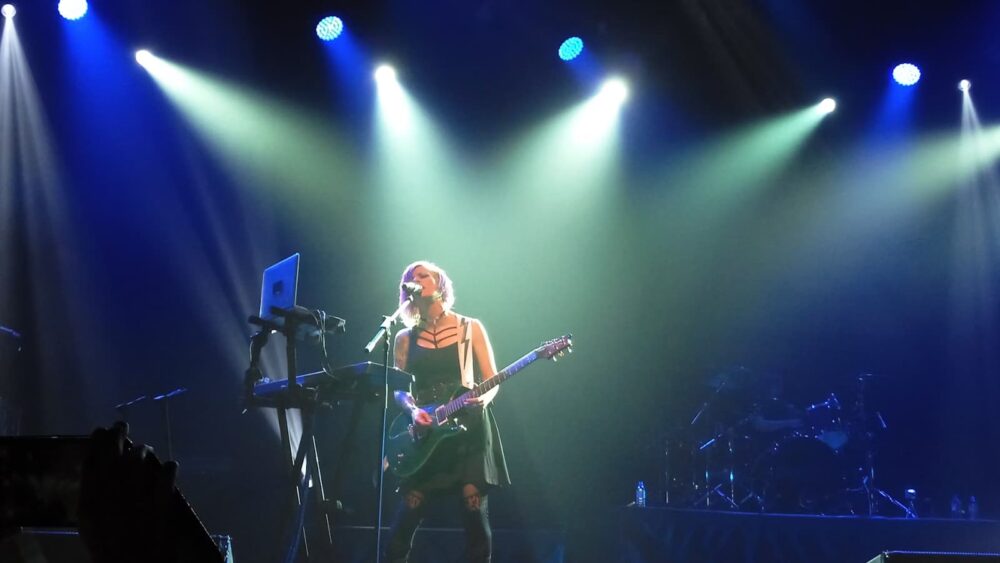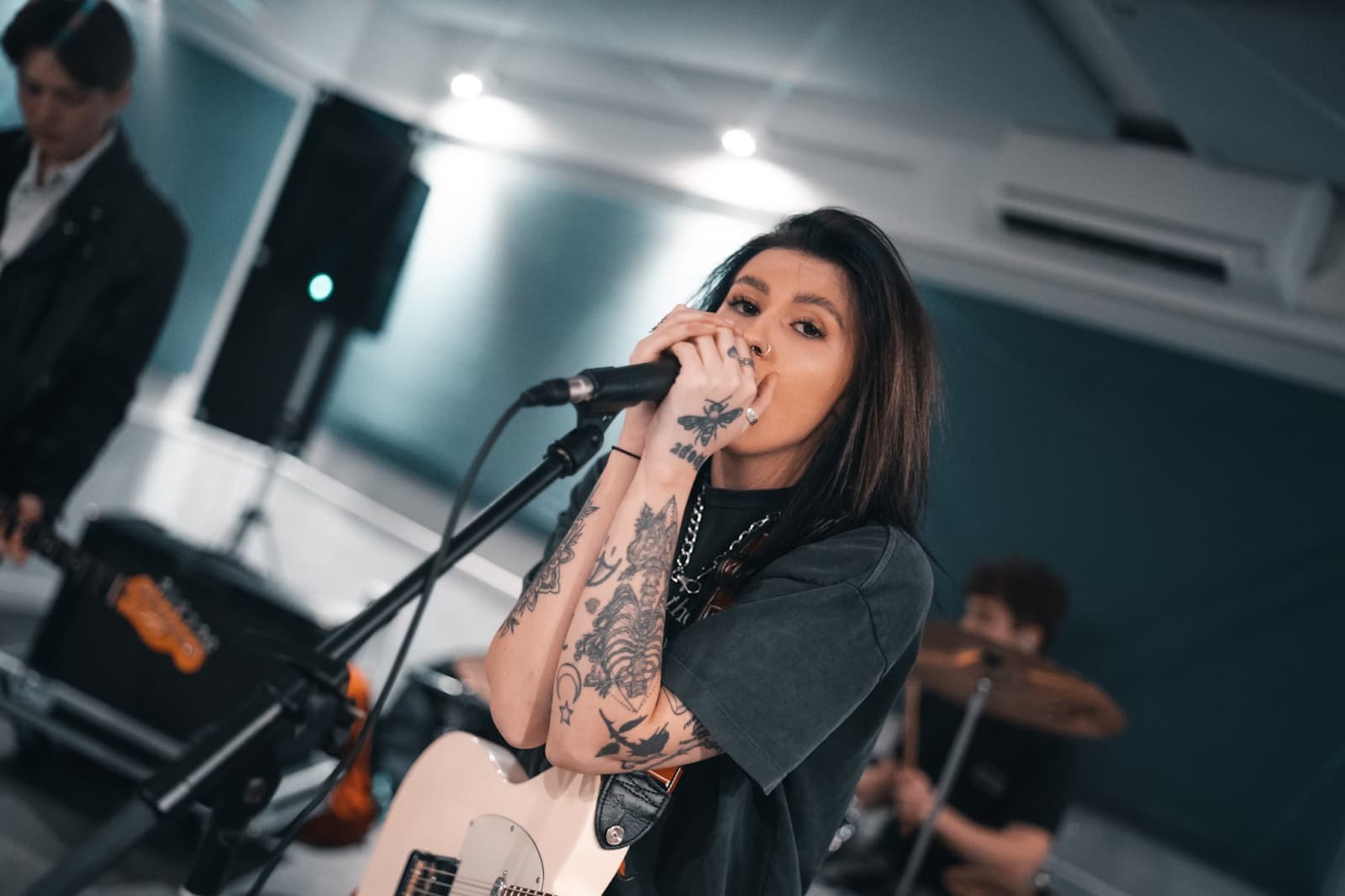Punk music has always been a space for rebellion, pushing boundaries, and challenging societal norms. Born in the 1970s as a response to the polished rock and roll of the time, punk embraced a raw, stripped-down sound, combined with a fierce ethos of non-conformity. But punk was not only about music; it was a social and cultural movement that questioned gender roles, class structures, and political systems. Women, in particular, found in punk a platform to express themselves in ways that mainstream music often denied them.
While men like Johnny Rotten of the Sex Pistols and Joey Ramone of the Ramones are often seen as the faces of punk, women were just as crucial in shaping the movement. From the early days of punk rock to its later iterations in riot grrrl and beyond, women have made invaluable contributions, not just as musicians but as activists, writers, and cultural disruptors. This blog post celebrates the powerful presence of women in punk, focusing on their role in shaping the sound, aesthetic, and politics of the movement.
The Early Days: 1970s Punk
The birth of punk music in the 1970s coincided with a growing feminist movement, making the genre fertile ground for women who were looking to challenge the male-dominated music industry. While rock music was often a space where women were either objectified or relegated to the sidelines, punk welcomed women who didn’t fit into traditional molds.
Patti Smith, often called the “punk poet laureate,” is one of the most prominent figures in early punk. With her fusion of rock, poetry, and punk’s DIY ethos, Smith was instrumental in establishing punk as an intellectual and cultural movement, not just a musical one. Her debut album, Horses (1975), is widely regarded as one of the greatest punk albums of all time, influencing countless musicians across genres. Songs like “Gloria” and “Land” melded garage rock with stream-of-consciousness poetry, challenging both the punk genre and traditional ideas of femininity.
Another key figure from this era is Debbie Harry, the lead singer of Blondie. While Blondie is often considered more of a new wave band, their early work was rooted in the New York punk scene. Harry’s unique blend of punk attitude and pop sensibility helped bring punk to a broader audience. Her cool, detached vocal style and striking visual presence—often donning leather jackets and ripped T-shirts—became iconic symbols of punk. Despite often being sexualized by the media, Harry retained agency over her image, using her visibility to subvert expectations about female performers.
In the UK, The Slits were one of the most important all-female punk bands of the time. Fronted by Ari Up, the Slits merged punk with reggae and experimental sounds, challenging the very notion of what punk music could be. Their debut album, Cut (1979), was a radical departure from the male-dominated sound of punk, with songs that critiqued gender norms and consumerism. The album cover, featuring the band topless and covered in mud, was a direct challenge to the male gaze, asserting their autonomy over their bodies and their image.
The 1980s: Hardcore and Beyond
As punk evolved into hardcore in the 1980s, the music became faster, louder, and more aggressive. Women were often marginalized in this space, as hardcore shows became notorious for their violent mosh pits and hyper-masculine culture. However, women still found ways to make their mark, often on the fringes of the movement.
One of the most important women in hardcore punk is Exene Cervenka, the co-lead vocalist of the Los Angeles band X. X was one of the most influential bands to come out of the LA punk scene, combining punk rock with rockabilly and Americana influences. Cervenka’s distinctive voice, combined with her poetic lyrics and punk ethos, made X stand out in a scene that was often more focused on aggression than artistry.
In the UK, of X-Ray Spex was another trailblazer. With her mixed-race heritage and confrontational lyrics, Poly Styrene stood out in a scene that was often white and male. Her unique voice—both literally and figuratively—challenged punk’s male-dominated narrative. Songs like “Oh Bondage Up Yours!” are feminist anthems that critique consumerism, patriarchy, and oppression, while Poly Styrene’s style—braces, neon clothing, and afro hair—was a rejection of traditional beauty standards.
Though the hardcore scene was less welcoming to women, bands like The Avengers, led by Penelope Houston, and Siouxsie and the Banshees, fronted by Siouxsie Sioux, continued to thrive. Siouxsie Sioux, in particular, became an enduring icon of the punk and post-punk movements, known for her dramatic makeup and uncompromising stage presence. Her band’s music blended punk with gothic, experimental sounds, paving the way for the goth subculture.

Riot Grrrl and the 1990s: A Feminist Punk Revival
The 1990s saw the rise of the riot grrrl movement, a feminist punk subculture that emerged in response to the male-dominated punk and indie scenes. Riot grrrl bands were often explicitly political, addressing issues like sexual assault, body image, and female empowerment. The movement was heavily influenced by the DIY ethos of punk, with bands often releasing their own records and zines.
At the forefront of the riot grrrl movement was Bikini Kill, fronted by Kathleen Hanna. Hanna became one of the most important voices in punk feminism, coining the term “girl power” and using her platform to address issues like sexism in the music industry, violence against women, and queer rights. Bikini Kill’s song “Rebel Girl” became an anthem of the movement, celebrating female friendship, solidarity, and rebellion. Hanna’s confrontational stage presence—often encouraging women to come to the front of the crowd at shows—challenged the male dominance of punk spaces.
Another key figure in riot grrrl was Carrie Brownstein, co-founder of Sleater-Kinney. Formed in Olympia, Washington, Sleater-Kinney became one of the most critically acclaimed bands of the 1990s, blending riot grrrl’s feminist politics with intricate guitar work and vocal harmonies. Songs like “Dig Me Out” and “I Wanna Be Your Joey Ramone” explored themes of desire, power, and identity, with Brownstein and her bandmates rejecting traditional gender roles both on and offstage.
Riot grrrl was also notable for its inclusivity, bringing issues of race, sexuality, and class into the punk conversation. Bands like Bratmobile, L7, and Heavens to Betsy (which included future Sleater-Kinney member Corin Tucker) were central to the movement, each contributing their own unique voice to the growing feminist punk landscape. While riot grrrl began as a grassroots movement, it had a lasting impact on mainstream culture, influencing later waves of feminism and inspiring a new generation of female musicians.
Punk’s Legacy: Women in Punk Today
The influence of women in punk is still felt today, as newer generations of musicians draw on the feminist and DIY ethos established by their predecessors. Bands like Savages, Warpaint, Gossip, and The Linda Lindas continue to push the boundaries of punk, incorporating elements of post-punk, indie rock, and experimental music while maintaining the confrontational spirit that punk has always embodied.
In addition to musicians, women in punk have also been influential as writers, artists, and activists. Zines, like Riot Grrrl Press and Punk Planet, gave women a platform to discuss their experiences and share their ideas, creating a space for dialogue and solidarity. Punk’s emphasis on DIY culture has also empowered women to take control of their own artistic production, whether through self-released records, independent films, or community organizing.
Perhaps most importantly, women in punk have continued to challenge the gender dynamics of the music industry, proving that punk is not just a genre for angry young men. Punk’s legacy of rebellion and resistance has made it an enduring space for women to challenge societal expectations, whether they’re expressing rage, vulnerability, or joy.
